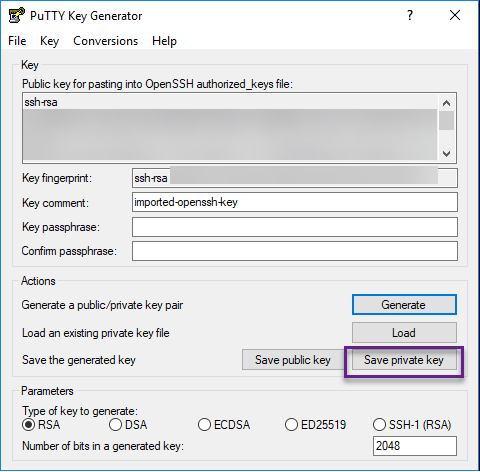Accessing Linux Qwiklabs With Putty Key Generator
- Accessing Linux Qwiklabs With Putty Key Generator Free
- Accessing Linux Qwiklabs With Putty Key Generator Download
Jun 12, 2013 In that file paste the string you copied from PuTTY Key Generator on one single line. Note that PuTTY Key Generator saves the key as a file with the key divided into multiple lines. Do not copy and paste that but paste it as it showed it to you just after generation in the “Public key for pasting into OpenSSH authorized keys file” field. I am accessing a linux box via ssh using putty. Key combinations work fine when I'm not running screen. However, Ctrl key combinations do not work under a screen session. In fact, a Ctrl-any key is registered the same as the same key without the Ctrl combination. I know this by typing Ctrl-V and then a Ctrl-key combination to figure out what.
SSH, the secure shell, is often used to access remote Linux systems. But its authentication mechanism, where a private local key is paired with a public remote key, is used to secure all kinds of online services, from GitHub and Launchpad to Linux running on Microsoft’s Azure cloud.

Generating these keys from Linux is easy, and thanks to Ubuntu on Windows, you can follow the same process from Windows 10. But even without Ubuntu, SSH keys can also be generated with the free and open source Windows application, PuTTy
Over the following few steps, we’ll guide you through the process of generating SSH keys using both Ubuntu on Windows and PuTTY.
Requirements
/parallels-11-activation-key-generator-free.html. All you need is a PC running Windows 10 and either of the following installed:
- The
puttygen.exeexecutable from PuTTY
If you don’t already have Ubuntu on Windows, take a look at our Install Ubuntu on Windows 10 tutorial.
To generate SSH public and private key pairs on Windows, one of the easiest tools to use, is the PuTTY Key Generator “puttygen.exe” (which can be downloaded from here).
The resulting generated files from the PuTTY Key Generator can be used to set up public key authentication with a remote server, allowing for more secure authentication over normal password based authentication (requires disabling password based authentication).
Download the PuTTY Key Generator
You can download puttygen from the following url:
https://www.chiark.greenend.org.uk/~sgtatham/putty/latest.html
Run puttygen.exe
When puttygen has loaded you will be presented with a screen such as this:
Generate the public and private keys
Click the “Generate” button on the main window to start the process of generating the key data.
While this is happening, you will need to move your mouse around in the blank area at the top of the application. This is used to help randomize the data used to generate the keys.
Once the progress bar has gone through, the public and private key data will have been generated, and you are ready to save the keys.
Saving the public and private keys
Public Key:
Simply press the “Save public key” button. This will be used on the remote host you want to be able to connect into remotely, using the private key.
Private Key:
You have the option to enter a passphrase if you want to make the key more secure. Enter that in, and the confirmed passphrase.
After thats done (or if you dont want to use a passphrase), simply press the “Save private key” button. Store this key in a safe place.
Using the private key in PuTTY
For information on how to use the private key file in PuTTY, please check the following page:
Using SSH Private Key Files with PuTTY
